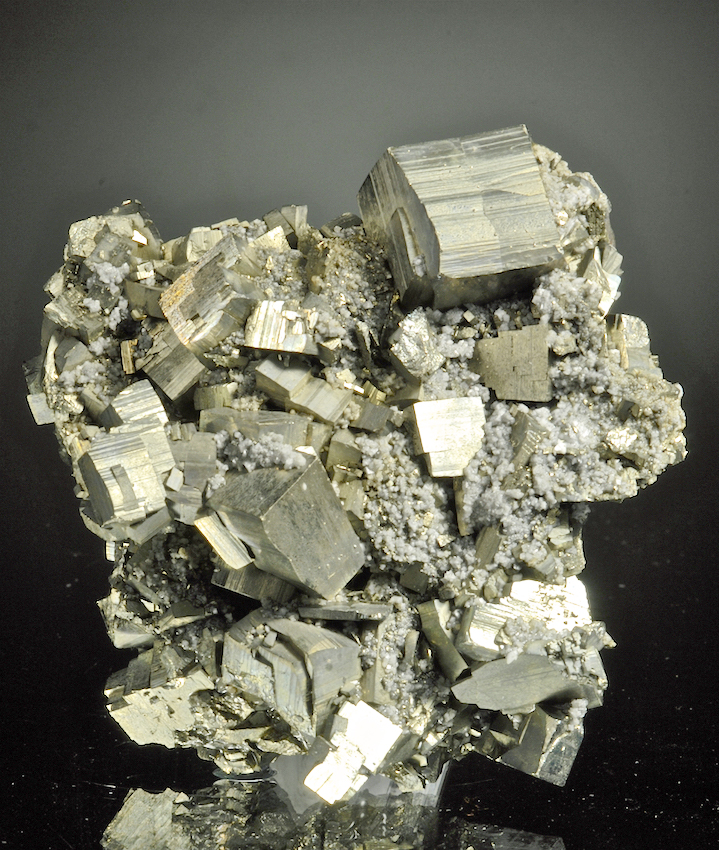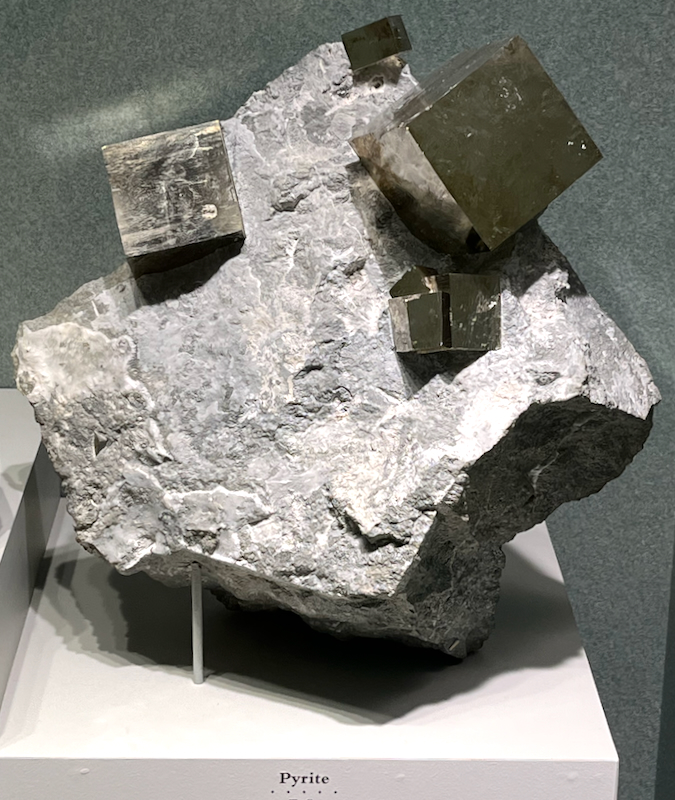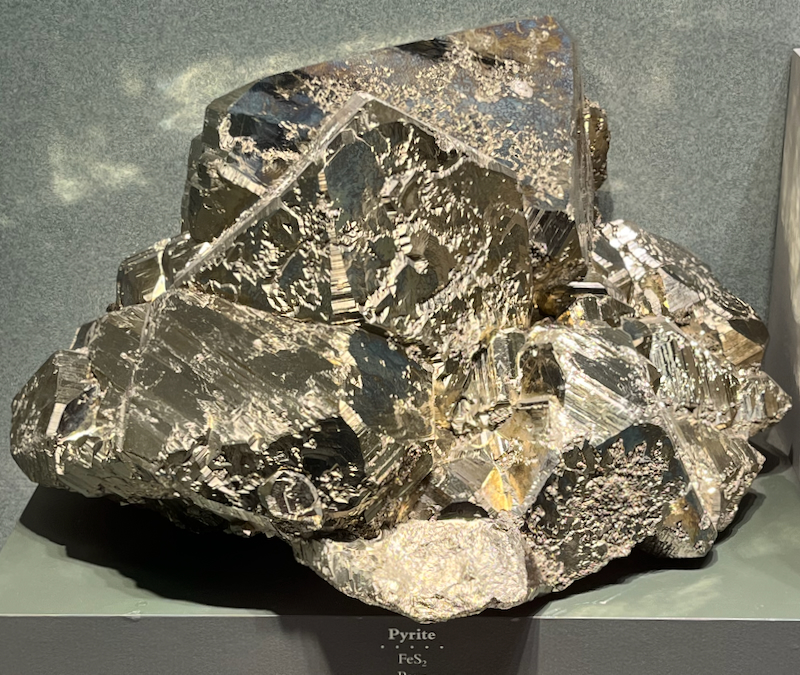Pyrite
Back when lots of people were hoping to strike it rich by finding gold out in the middle of nowhere, they often would find a gold-colored mineral that, sadly for them, wasn’t gold, even though they thought or wished it was. That mineral was pyrite, which is made up of iron (Fe) and sulfur (S), and it earned the nickname “fool’s gold.” Years later, lab tests showed that pyrite sometimes does contain a little gold after all, so anyone who was “fooled” by pyrite wasn’t necessarily totally wrong. Even without gold, pyrite can be worth collecting because of the striking shapes it can form. The recent biggest source of pyrite is in Navajun, Spain, where they’re finding thousands of perfect cubes of pyrite, some of them quite large. But you don’t have to go to Spain to find pyrite, it shows up in many different kinds of rocks all over the world. It even occurs in some fossil deposits, where, if the conditions are right, it turns the fossils themselves into pyrite, or in coal deposits, where it can form disc-shaped “pyrite suns.” Finally, pyrite’s name is pretty striking as well because it comes from the Greek word for “fire,” based on the way it makes sparks if you strike it with a piece of metal.
| Formula | Group or Type | Shape | Hardness | Specific Gravity | Streak | Luster |
|---|---|---|---|---|---|---|
| FeS2 | — | Isometric | 6–6.5 | 4.9–5.2 | Greenish black | Metallic |


